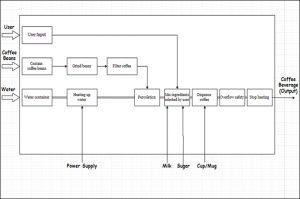What Is Circuit Slicing?
Read Also: 6 Best Ways to Drain a Tooth Abscess at Home
Circuit slicing is the process of dividing a larger circuit into smaller, more manageable parts. This technique is used to simplify complex circuits and make them easier to understand. By breaking down a circuit into smaller pieces, you can analyze and understand each component’s behavior and how it interacts with other parts of the circuit.
Why Slicing a Circuit is Important?
Slicing a circuit is important for a few reasons. First, it allows you to analyze the behavior of individual components in the circuit. This can be especially helpful when troubleshooting a circuit, as you can focus on the part of the circuit that is causing problems. Additionally, slicing a circuit can make it easier to test and design new circuits. By understanding how each component of the circuit interacts with the others, you can make more informed design decisions.
Read Also: How Far Apart to Plant Tomatoes
Steps On How To Slice A Circuit
The process of slicing a circuit can vary depending on the complexity of the circuit and the tools available. However, there are some general steps that can be followed to effectively slice a circuit:
Identify The Circuit’s Functional Blocks
The first step in slicing a circuit is to identify the functional blocks of the circuit. A functional block is a group of components that perform a specific function within the circuit. For example, in a radio circuit, the functional blocks might include the tuner, amplifier, and speaker.

Draw A Block Diagram
Once you have identified the functional blocks of the circuit, draw a block diagram that shows the relationships between the blocks. A block diagram is a graphical representation of the functional blocks and their interconnections.

Read Also: 5 Ways on How to fix overbite
Analyze Each Block
Analyze each functional block individually to understand how it works and how it interacts with other parts of the circuit. This may involve simulating the behavior of the block or using testing equipment to measure its performance.
Break Down Each Block
Once you understand how each block works, you can break it down into smaller parts. For example, you might break down an amplifier block into its individual components, such as the transistors, resistors, and capacitors.
Repeat
Continue this process of analyzing and breaking down each functional block until you have a complete understanding of the circuit’s behavior.
Read Also: 7 Steps and Tips to Wash Squishmallows Easily
Tips For Effective Circuit Slicing
Here are some tips to make your circuit-slicing process more effective:
Start With The Big Picture
When beginning the process of slicing a circuit, start with the big picture. Identify the major functional blocks of the circuit before diving into the details.How To Slice On The Circuit
Keep Track Of Your Progress
Keep a record of the functional blocks you have identified and the analysis you have performed. This can help you keep track of your progress and ensure that you have covered all aspects of the circuit.
Read Also: How Old Do You Have to Work at Taco Bell?
Use Simulation Software
Simulation software can be a helpful tool for analyzing the behavior of a circuit. Use software to simulate the behavior of individual components and functional blocks.
Test Our Assumptions
As you break down the circuit into smaller parts, test your assumptions about how each part works. Use testing equipment to measure the performance of each component and ensure that it is behaving as expected.
Conclusion
Circuit slicing is an important electronic technique that can help simplify complex circuits and make them easier to understand. By breaking down a circuit into smaller parts, you can analyze the behavior of individual components and understand how they interact with other parts of the circuit.
Share This Post:





